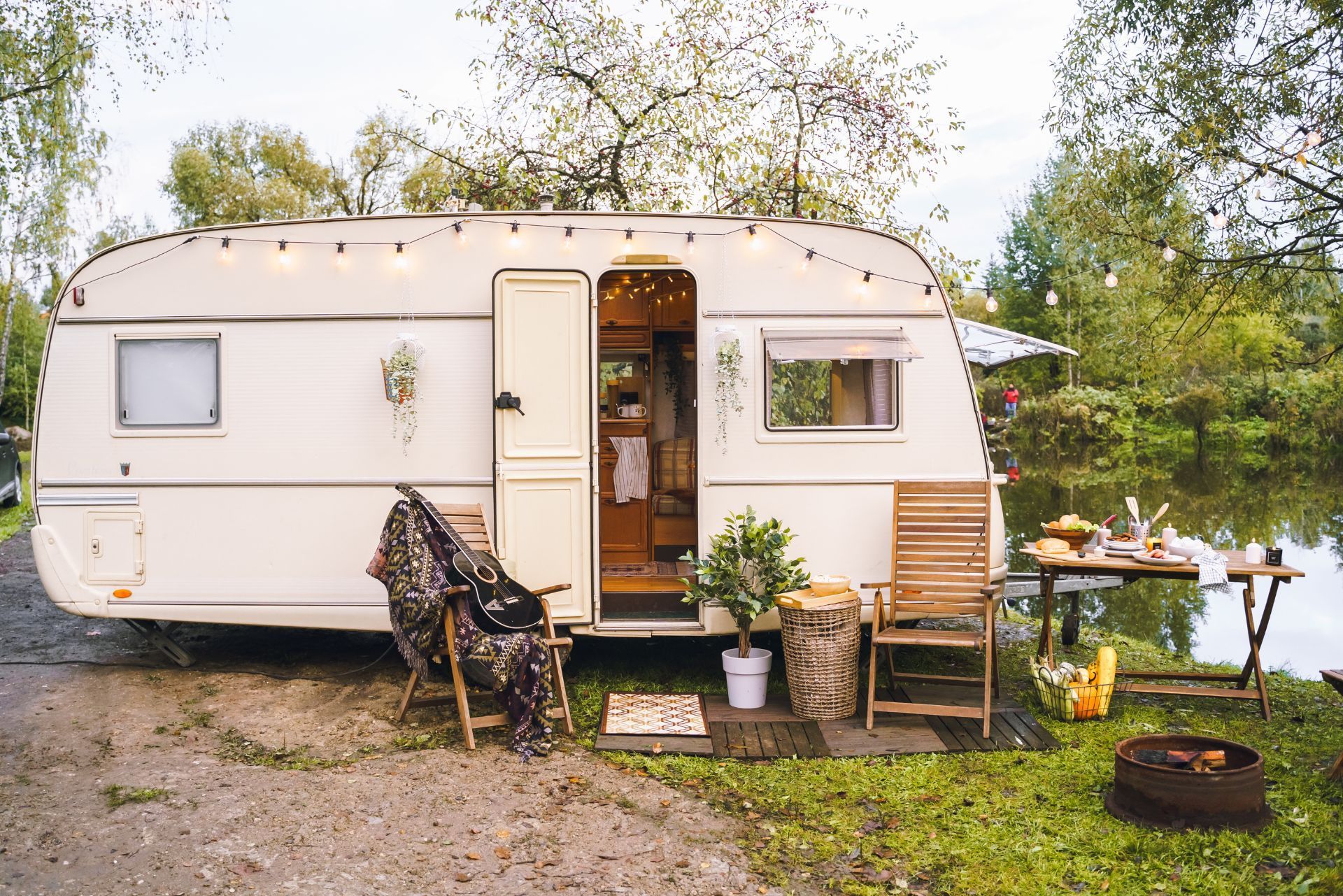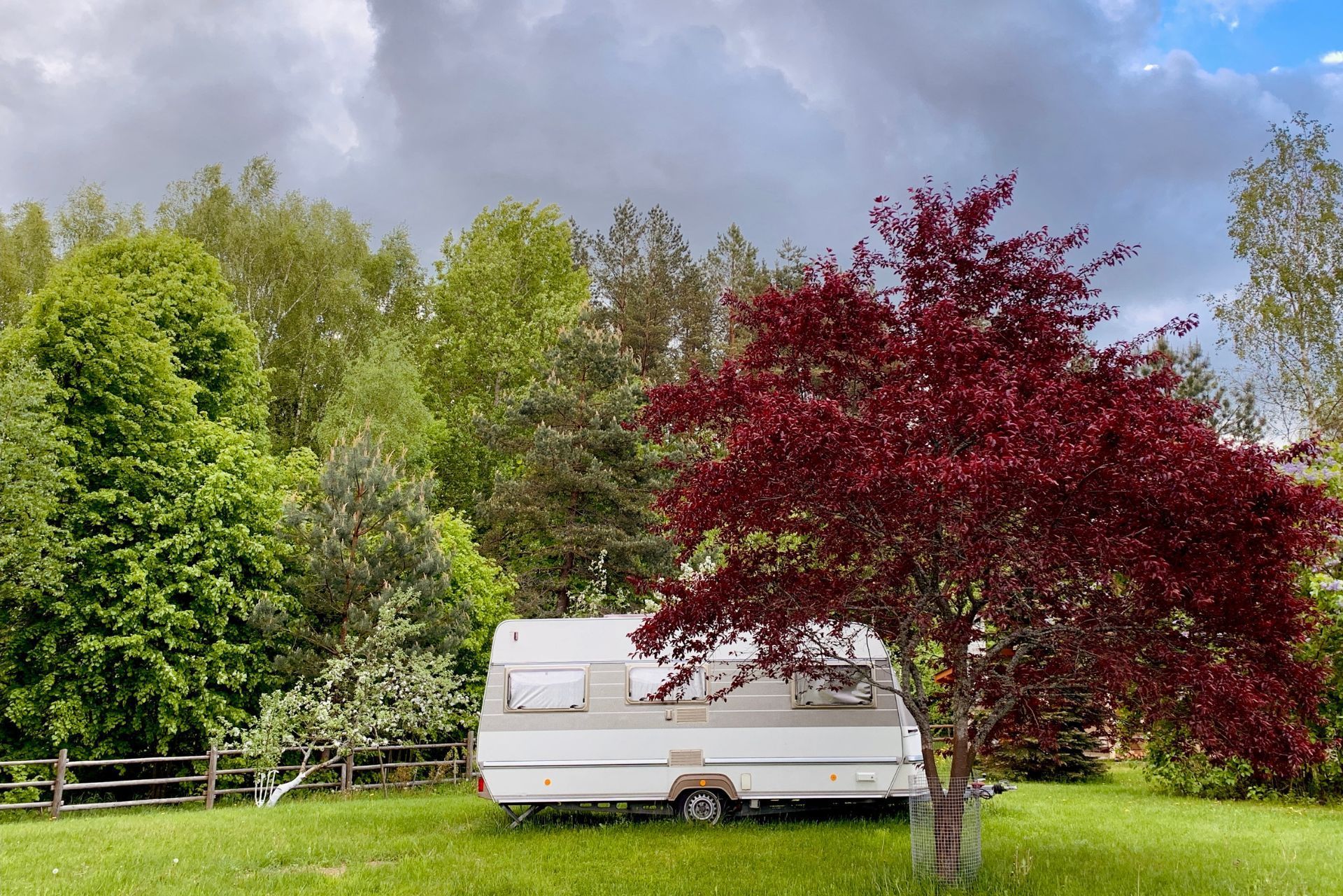Top 3 Recommended Policies

By: David Graves
Licensed Personal Insurance Specialist
425-320-4280
Mobile homes—called manufactured homes in most statutes—house more than 225,000 Washington residents according to the 2022 American Community Survey. While these homes offer affordability and flexibility, they are also exposed to Pacific Northwest windstorms, heavy winter snowloads and, in parts of the state, rapidly spreading wildfires. These unique risks make mobile home insurance more than a nice-to-have document; it is the financial safety net that keeps a roof over a household when nature, theft, or liability claims threaten hard-earned stability.
Why Mobile Home Insurance Matters in Washington State
The Puget Sound lowlands routinely record wind gusts above 50 mph, and the National Weather Service lists Washington among the top ten states for annual property damage caused by wind. Unlike traditional site-built houses, manufactured homes rest on piers or non-permanent foundations, leaving skirting and undersides more susceptible to uplift and debris impact. Proper insurance is needed to transfer that heightened structural risk away from the homeowner.
Coverage is equally critical from an economic standpoint. The median mobile home value in Washington is just over $165,000—modest compared with stick-built homes, but still a sum most families could not easily replace out-of-pocket. Insurance ensures that savings and retirement funds remain intact after a fire, break-in, or liability lawsuit.
Moreover, Washington's unique geography and climate present additional challenges that can affect mobile home safety and longevity. From the heavy rains and potential flooding in the western part of the state to the harsher winters and snow loads in the eastern areas, mobile homes can face a variety of weather-related threats. This variability underscores the importance of having a comprehensive insurance policy that not only covers wind damage but also accounts for water damage, which can be particularly devastating in areas prone to heavy rainfall or flooding. Homeowners should be aware of the specific risks associated with their location and ensure that their insurance policies are tailored to address those vulnerabilities.
Additionally, the community aspect of mobile home living in Washington cannot be overlooked. Many mobile home parks foster a close-knit environment where neighbors look out for one another, creating a sense of security. However, this communal lifestyle can also lead to shared risks, such as vandalism or damage from common areas. Insurance can provide peace of mind not only for individual homeowners but also for the entire community, ensuring that everyone is protected against unforeseen events. By investing in mobile home insurance, residents can maintain their quality of life and protect their investments, allowing them to focus on enjoying their homes and the beautiful Washington landscape around them.

Understanding the Legal Landscape
Washington law does not mandate mobile home insurance the same way it mandates auto liability coverage. However, most lenders and park management companies require proof of insurance before financing a purchase or approving a lot lease. Failure to comply can result in loan default or eviction from the community.
The Washington Office of the Insurance Commissioner (OIC) oversees all property insurance policies sold in the state. Insurers must file forms and rates with the OIC, ensuring consumer protections such as mandatory disclosures, clearly stated exclusions, and the right to appeal claim denials. This regulatory environment increases transparency, but it also means policy language can be dense; reading declarations pages carefully is essential. Additionally, consumers should be aware that while the OIC provides oversight, the responsibility for understanding the intricacies of their insurance policy ultimately lies with them. Engaging with insurance agents and asking questions can help demystify complex terms and conditions, leading to more informed decisions.
Finally, mobile homes built after June 15, 1976 must meet HUD construction standards. While these regulations have improved fire safety and structural integrity, insurers still rate manufactured homes separately from site-built dwellings because claims histories and repair costs differ. This distinction is crucial for homeowners to understand, as it can affect both the cost of premiums and the types of coverage available. Furthermore, certain factors such as location, age of the home, and even the materials used in construction can influence insurance rates. Homeowners are encouraged to shop around and compare policies, as variations in coverage and pricing can be significant across different insurers. Understanding these nuances can empower homeowners to secure the best possible coverage tailored to their unique circumstances.
Essential Coverage Components
A well-rounded policy mirrors many elements of a standard homeowners form (HO-3), but wording and limits are tweaked to reflect manufactured housing’s unique profile. Below are the core elements every Washington policyholder should understand.
Dwelling Coverage
This portion pays to repair or replace the mobile home itself when damaged by covered perils such as fire, lightning, windstorm, or weight of ice and snow. Replacement cost coverage is strongly recommended, because actual cash value deducts depreciation—meaning a 15-year-old roof could yield only pennies on the dollar if you accept ACV terms. Additionally, it’s important to consider the specific materials and construction methods used in your manufactured home, as these can affect repair costs. For instance, homes built with higher-quality materials may have a higher replacement cost, so ensuring your coverage reflects this can save you significant out-of-pocket expenses in the event of a loss.
Personal Property Coverage
Furniture, clothing, electronics, and appliances fall under personal property. Most insurers default to 40–60 percent of the dwelling limit, but high-value items like jewelry, firearms, and musical instruments may require scheduled endorsements. Remember that theft losses in a park-setting can be higher; keep receipts or maintain a digital inventory to avoid documentation headaches during a claim. Furthermore, consider the potential for natural disasters specific to your area, such as flooding or earthquakes, which may necessitate additional coverage for personal property that could be at risk. Some policies offer specialized coverage for items like collectibles or artwork, which can be beneficial if you have valuable possessions that require extra protection.
Liability Protection
If a guest trips on a loose stair tread or a toddler breaks an ankle on your lot’s playset, liability coverage pays medical bills, legal defense, and judgments up to the policy limit. Washington courts awarded an average of $238,000 in premises liability cases in 2021, illustrating why a base $100,000 limit may be inadequate. Many companies offer upgrades to $300,000 or even $500,000 for only a few dollars more per month. It's also wise to consider umbrella liability insurance, which provides an extra layer of protection beyond your standard policy limits. This can be especially important for those with significant assets to protect, as it can cover a wider range of incidents and higher claim amounts, ensuring peace of mind in the event of an unforeseen accident.
Additional Living Expenses
A fire or wind event can render a manufactured home uninhabitable, especially when utilities must be disconnected. Loss‐of‐use coverage reimburses hotel bills, restaurant meals, laundry, and mileage during rebuilding. Most policies cap ALE at 20 percent of the dwelling limit or twelve months, whichever comes first. It's essential to understand the specifics of your policy regarding this coverage, as some insurers may have different stipulations about what qualifies as a reimbursable expense. Additionally, consider the potential for extended rebuilding times in the event of widespread damage in your area, which could necessitate a longer stay in temporary accommodations. Keeping a detailed record of all expenses incurred during this period can help facilitate a smoother claims process and ensure you receive the full benefits of your coverage.
Common Exclusions and Limitations
Flooding from rivers, coastal surge, or surface water is excluded under standard forms and requires a separate National Flood Insurance Program (NFIP) or private flood policy. With the Skagit, Snohomish, and Yakima rivers breaching banks almost yearly, residents in low-lying zones should verify coverage before the rainy season. It's crucial for homeowners to understand the specific terms of their flood insurance policies, as many may not realize that standard homeowners insurance does not cover flood damage. This lack of awareness can lead to devastating financial consequences in the event of a flood, especially in areas prone to heavy rainfall or rapid snowmelt. Additionally, local government initiatives often provide resources and guidance on how to prepare for potential flooding, including elevation certificates and floodplain management programs.
Mold, rot, and gradual wear and tear are also excluded because insurers view them as maintenance issues. Roof leaks that evolve over months typically will not qualify for claim payment unless a sudden event, such as a fallen limb, punctures the membrane. Homeowners should be proactive in maintaining their properties to prevent these issues from arising. Regular inspections of roofs, basements, and plumbing can help identify potential problems before they escalate into costly repairs. Furthermore, many insurance companies offer discounts or incentives for homeowners who take preventive measures, such as installing sump pumps or upgrading drainage systems. Understanding these exclusions and taking appropriate actions can significantly mitigate risks and enhance the longevity of a home.
Cost of Mobile Home Insurance in Washington
Premiums vary widely. According to 2023 filings, statewide averages run between $350 and $900 per year, but premiums in coastal Grays Harbor County or wildfire-prone Okanogan County can exceed $1,200 due to higher peril scores. These variations reflect not only the geographical risks but also the unique environmental challenges that different regions face, such as flooding in coastal areas or wildfires in the eastern parts of the state. As climate change continues to impact weather patterns, homeowners may need to reassess their insurance needs and consider additional coverage options to protect against increasingly frequent natural disasters.
Average Premium Numbers
Surveys of top five insurers show a single-wide home built after 1995 in Spokane with $60,000 dwelling coverage averages $425 annually, while a double-wide on Bainbridge Island with $175,000 coverage averages $810. Deductibles of $1,000 and multi-policy discounts were assumed in these figures. It's worth noting that the age and condition of the mobile home can significantly affect these premiums; newer homes often come with modern safety features and materials that can lower risk, while older models may require additional inspections or upgrades to meet current standards. Homeowners should also consider the benefits of bundling their mobile home insurance with other policies, such as auto or life insurance, as this can lead to substantial savings.
Factors Used in Rating
Insurers examine the home’s construction year, roof type, proximity to fire stations, prior claims, and whether the dwelling is owner-occupied or rented. Skirting quality and anchoring systems can also influence pricing because they affect storm resilience. Credit‐based insurance scores are legal in Washington and can swing premiums by 20 percent or more, although the state temporarily banned their use between 2021 and 2023 before the courts overturned the rule. Additionally, the location of the mobile home park or lot can play a crucial role in determining rates; areas with a strong community focus on safety and maintenance may see lower premiums due to reduced risks. Homeowners should also be aware of any local regulations or requirements that might affect their insurance options, as these can vary significantly from one municipality to another, further complicating the landscape of mobile home insurance in Washington.
Discounts and Ways to Save
Most carriers reward bundling home and auto policies with discounts between 10 and 20 percent. Installing a centrally monitored fire or burglar alarm can shave another 5 percent. Some insurers now accept smart water shut-off valves and temperature sensors as qualifying devices—particularly helpful for eastern Washington where frozen pipes are common.
A claims-free history produces hefty savings over time. If the dwelling value is high, opting for a larger deductible—say $2,500 instead of $500—can reduce premiums by up to 15 percent. Just be sure the savings outweigh the increased out-of-pocket cost when misfortune strikes.
Filing and Managing a Claim
When disaster hits, contact the insurer’s 24-hour claims line or mobile app as soon as everyone is safe. Washington regulations stipulate that an acknowledgment letter or email must be sent within ten business days, so keep an eye on that timeline.
Adjusters will likely visit the property, document damage, and request proof of ownership for personal items. Using a free inventory app—or even a simple cloud-stored spreadsheet—speeds this step dramatically. For wind or fire losses, temporary repairs such as tarping a roof are allowed and reimbursable; keep receipts.
If a settlement seems low or a denial feels unjust, policyholders may file a Consumer Complaint with the OIC. The agency mediates hundreds of such disputes annually and often compels insurers to reopen investigations, so the option is worth considering before hiring legal counsel.

How to Choose a Reliable Insurer
Begin with financial strength ratings from A.M. Best or Standard & Poor’s; anything below “A-” raises solvency concerns. Next, scan the OIC’s Complaint Index, which compares the number of justified grievances per $1 million in premium. Companies scoring below 1.00 perform better than the statewide average.
Finally, weigh soft factors: Does the carrier offer local adjusters familiar with regional building codes? Is the mobile app intuitive? Does customer support answer calls promptly? Solicit feedback in park community forums or from local manufactured-home dealers—insights from neighbors who have filed claims are invaluable.
Frequently Asked Questions
The queries below surface repeatedly in park meetings, real-estate offices, and social media groups dedicated to manufactured housing. Knowing the answers in advance can save time and stress.
Is mobile home insurance required by law in Washington?
The state does not mandate coverage, but lenders and most park owners do. Even if you own the land outright, carrying insurance protects against catastrophic out-of-pocket losses.
Can I bundle mobile home and auto insurance?
Yes. Nearly every national and regional carrier offers multi-policy discounts. Savings range from 10 percent on the home policy to 25 percent on the auto side, depending on the insurer’s appetite for manufactured housing.
Does coverage apply while relocating?
Standard policies exclude damage that occurs while the home is in transit. Specialized “trip endorsement” coverage, typically costing $75–$100 for 30 days, must be added before wheels turn.
How does age of the home impact rates?
Homes built after the HUD code revisions of 1994 benefit from improved wind-resistance and fire-retardant materials, often translating to 10–15 percent lower premiums compared with pre-1994 units of the same size and location.
Final Thoughts
Owning a manufactured home in Washington offers the freedom of lower purchase prices and wider location choices, but it also carries exposure to windstorms, wildfires, and liability claims. Insurance transforms unpredictable events into predictable monthly or annual expenses, safeguarding both the dwellings and the families inside them.
With a clear understanding of coverage types, costs, and regulatory protections, Washington homeowners can navigate the insurance marketplace confidently. Compare quotes, scrutinize policy language, and update coverage as the home ages or its value rises. The hour or two invested today could spare tens of thousands of dollars—and immeasurable peace of mind—tomorrow.

